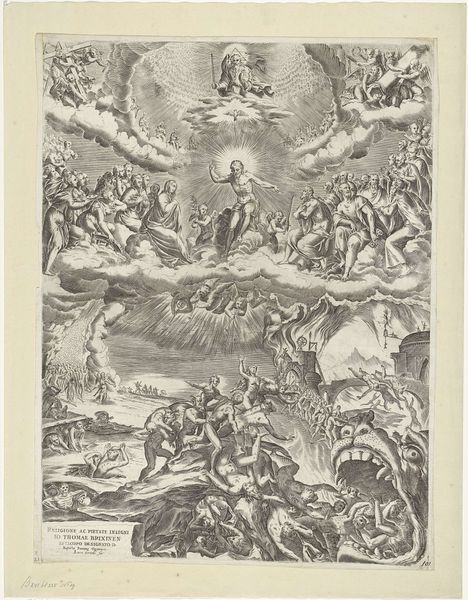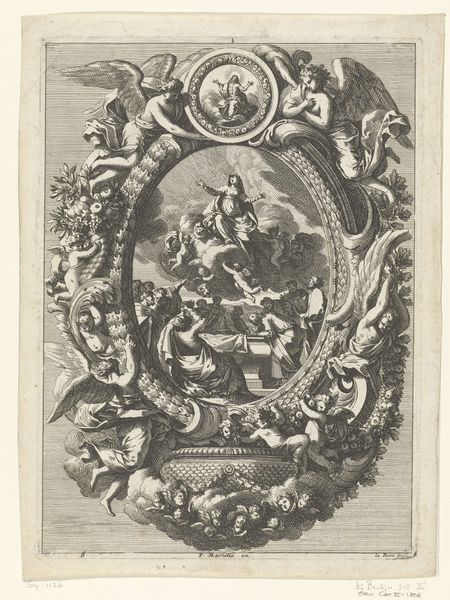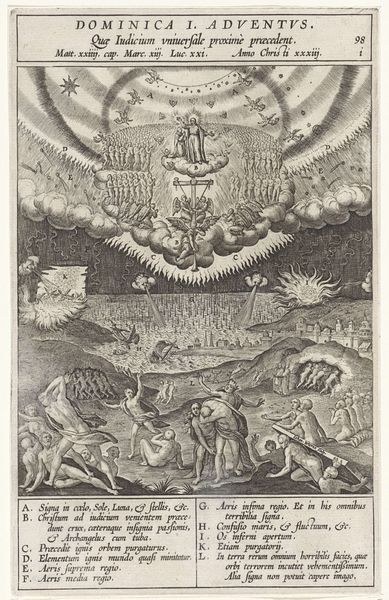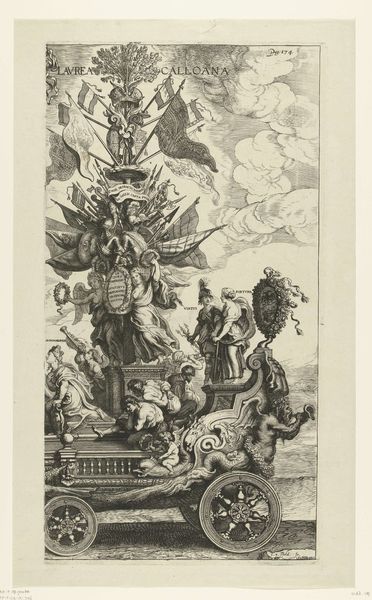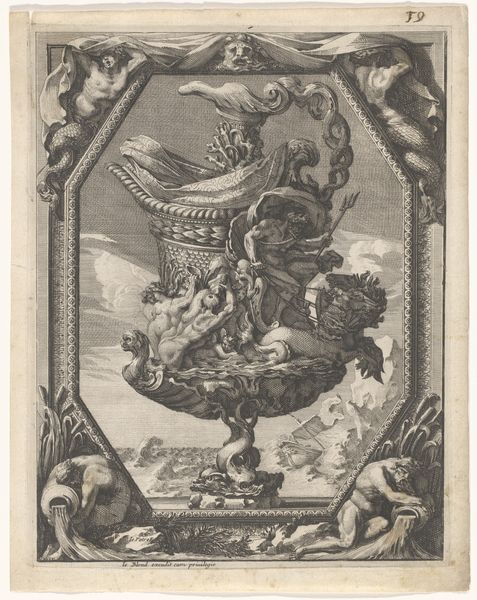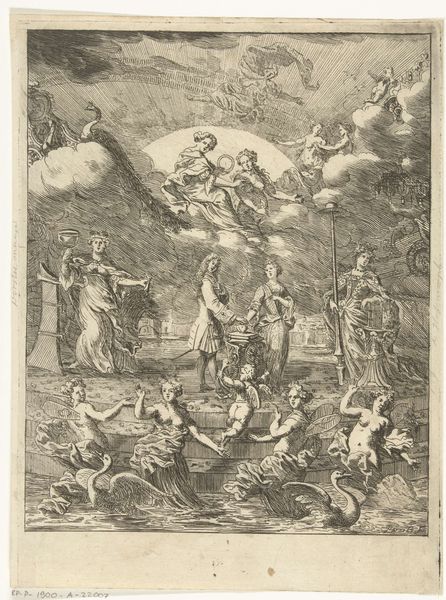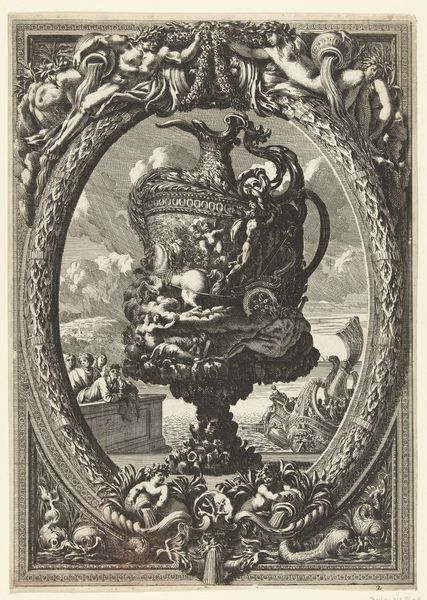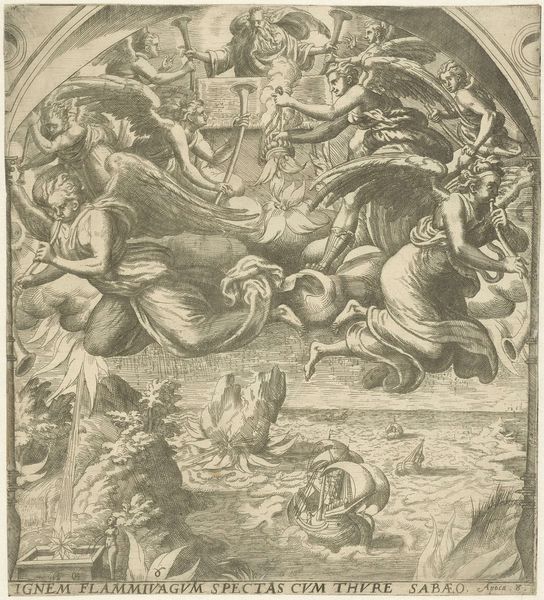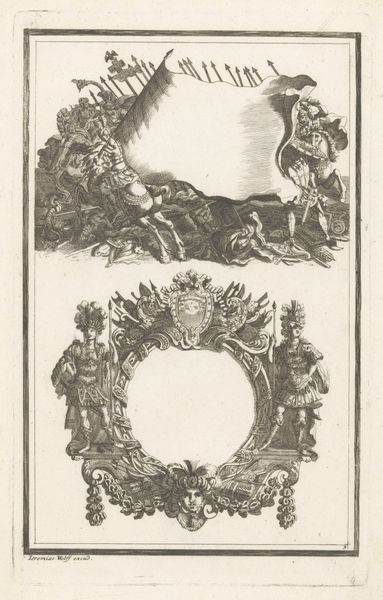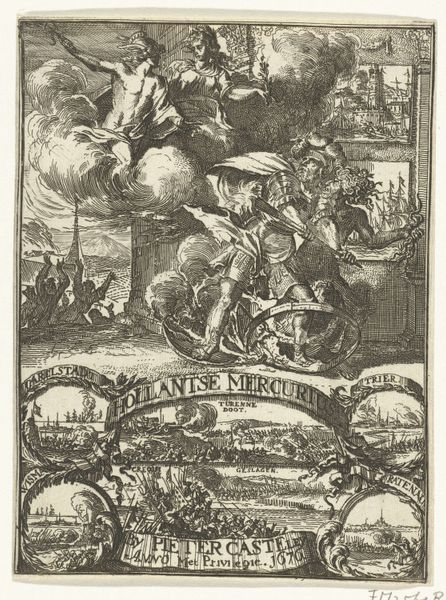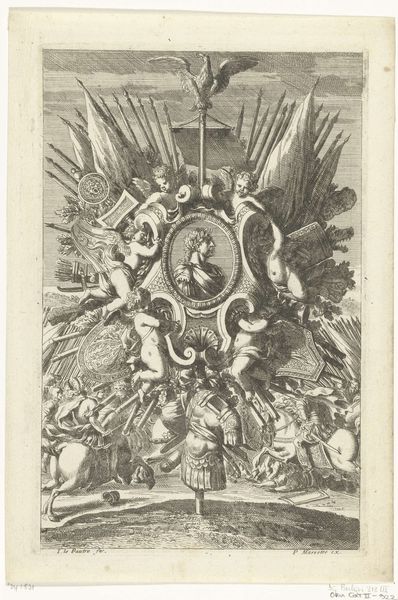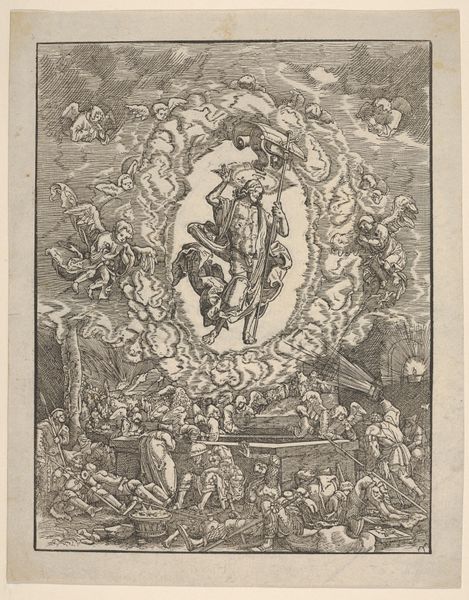
engraving
#
allegory
#
baroque
#
pen drawing
#
dutch-golden-age
#
landscape
#
figuration
#
form
#
line
#
history-painting
#
engraving
Dimensions: height 504 mm, width 368 mm
Copyright: Rijks Museum: Open Domain
Curator: This engraving by Jan van Vianen, titled "Neptune with Tritons on a Sea with Ships," dates back to 1693. Look closely at the impressive level of detail he achieves using just line work. Editor: It feels incredibly dense, almost overwhelming. All the detail makes it hard to focus. There’s a sense of… boastfulness? Like an overload of symbols designed to impress. Curator: Boastfulness is an interesting take! Given the date, we need to consider the historical context. The Dutch Golden Age was fueled by maritime trade and colonial expansion. Images like this served to project power. How might the materiality speak to these issues? Editor: Right, it’s not just Neptune; it’s also a naval fleet, a winged figure, and decorative flourishes galore. And those mermen—such classical figures made new in the age of colonialism and exploitation of resources... Think of the impact this would have on a contemporary audience seeing the Dutch republic positioned this way. I am curious who the patrons commissioning the art were and what that would represent. Curator: Exactly. Consider that this print was widely reproduced, serving as propaganda. Van Vianen’s choice of engraving is crucial here. It allowed for relatively inexpensive reproduction and mass distribution. Editor: So the medium is fundamental to understanding the message and that relates to class, economics, colonialism, power. What were these things crafted from, how, by whom? Also, what exactly did this artwork signify in the history of power relations, or war or slavery? What did Neptunus come to represent in the 17th century, in the face of colonization and maritime authority? I feel there are gender implications as well. Curator: All crucial points! Beyond just maritime supremacy, van Vianen uses allegory to portray Dutch dominance and global outreach, linking national identity and the projection of maritime power through reproducible prints intended for a broad consumer base. It brings into question what were the socio economic origins and life expectations that facilitated production. Editor: So the power of this artwork relies less on its aesthetic value and more on what it represents? Fascinating. Curator: Precisely. Van Vianen was tapping into deeply ingrained cultural narratives to reinforce very specific sociopolitical agendas. Thank you, it's imperative to reflect that such historical artworks contain contemporary implications. Editor: Yes. By exploring all those levels, the art reveals uncomfortable yet important facets of power and perception.
Comments
No comments
Be the first to comment and join the conversation on the ultimate creative platform.

